第64章
Out of a sheet of gray paper cut strips 5 mm.wide in such a way that there will be alternately an empty space and a bar of gray, both of the same width, the bars being held together by the uncut edges of the gray sheet (thus presenting an appearance like a gridiron).Lay this on a colored back-ground -- e.g.green -- cover both with transparent paper, and above all put a black frame which covers all the edges, having visible only the bars, which are now alternately green and gray.The gray bars appear strongly colored by contrast, although, since they occupy as much space as the green bars, we are not deceived into believing that we see the former through a green medium.The same is true if we weave together into a basket pattern narrow strips of green and gray and cover them with the transparent paper.
Why, then, if it is a true sensation due to physiological causes, and not an error of judgment, which causes the contrast, does the color disappear when the outlines of the gray scrap are traced, enabling us to recognize it as an independent object? In the first place, it does not necessarily do so, as will easily be seen if the experiment is tried.The contrast-color often remains distinctly visible in spite of the black outlines.In the second place, there are many adequate reasons why the effect should be modified.Simultaneous contrast is always strongest at the border-line of the two fields; but a narrow black field now separates the two, and itself by contrast strengthens the whiteness of both original fields, which were already little saturated in color;
and on black and on white, contrast colors show only under the most favorable circumstances.Even weak objective differences in color may be made to disappear by such tracing of outlines, as can be seen if we place on a gray background a scrap of faintly-colored paper, cover it with transparent paper and trace its outlines.Thus we see that it is not the recognition of the contrasting field as an independent object which interferes with its color, but rather a number of entirely explicable physiological disturbances.
The same may be proved in the case of holding above the tissue paper a second gray scrap and comparing it with that underneath.
To avoid the disturbances caused by using papers of different brightness, the second scrap should be made exactly like the first by covering the same gray with the same tissue paper, and carefully cutting a piece about 10 mm.square out of both together.To thoroughly guard against successive contrast, which so easily complicates the phenomena, we must carefully prevent all previous excitation of the retina by colored light.This may be done by arranging thus: Place the sheet of tissue paper on a glass pane, which rests on four supports; under the paper put the first gray scrap.By means of a wire, fasten the second gray scrap 2 or 3 cm.
above the glass plate.Both scraps appear exactly alike, except at the edges.Gaze now at both scraps, with eyes not exactly accommodated, so that they appear near one another, with a very narrow space between.Shove now a colored field (green) underneath the glass plate, and the contrast appears a once on both scraps.If it appears less clearly on the upper scrap, it is because of its bright and dark edges, its inequalities, its grain, etc.When the accommodation is exact, there is no essential change, although then on the upper scrap the bright edge on the side toward the light, and the dark edge on the shadow side, disturb somewhat.By continued fixation the contrast becomes weaker and finally yields to simultaneous induction, causing the scraps to become indistinguishable from the ground.
Remove the green field and both scraps become green, by successive induction.
If the eye moves about freely these last-named phenomena do not appear, but the contrast continues indefinitely and becomes stronger.When Helmholtz found that the contrast on the lower scrap disappeared, it was evidently because he then really held the eye fixed.This experiment may be disturbed by holding the upper scrap wrongly and by the differences in brightness of its edges, or by other inequalities, but not by that recognizing of it as an independent body lying above the colored ground, on which the psychological explanation rests.
In like manner the claims of the psychological explanation can be shown to be inadequate in other cases of contrast Of frequent use are revolving disks, which are especially efficient in showing good contrast-phenomena, because all inequalities of the ground disappear and leave a perfectly homogeneous surface.On a white disk are arranged colored sectors, which are interrupted midway by narrow black fields in such a way that when the disk is revolved the white becomes mixed with the color and the black, forming a colored disk of weak saturation on which appears a gray ring.The latter is colored by contrast with the field that surrounds.Helmholtz explain the fact thus:
"The difference of the compared colors appears greater than it really is either because this difference, when it is the only existing one and draws the attention to itself alone, makes a stronger impression than when it is one among many, or because the different colors of surface are conceived as alterations of the one ground-color of the surface such as might arise through shadows falling on it, through colored reflexes, or through shadows falling on it, through colored reflexes, or through mixture with colored paint or dust.In truth, to produce an objectively gray spot on a green surface, a reddish coloring would be necessary."